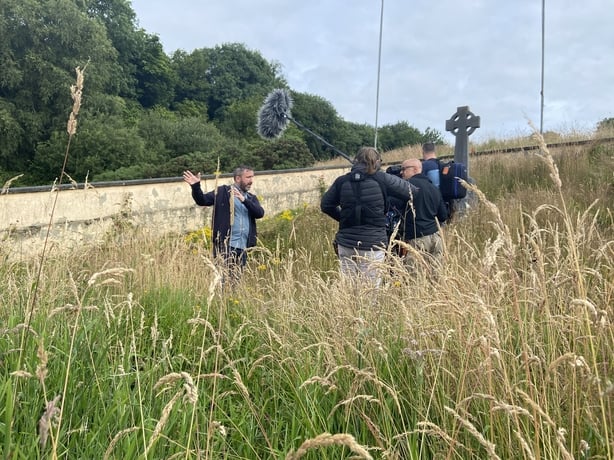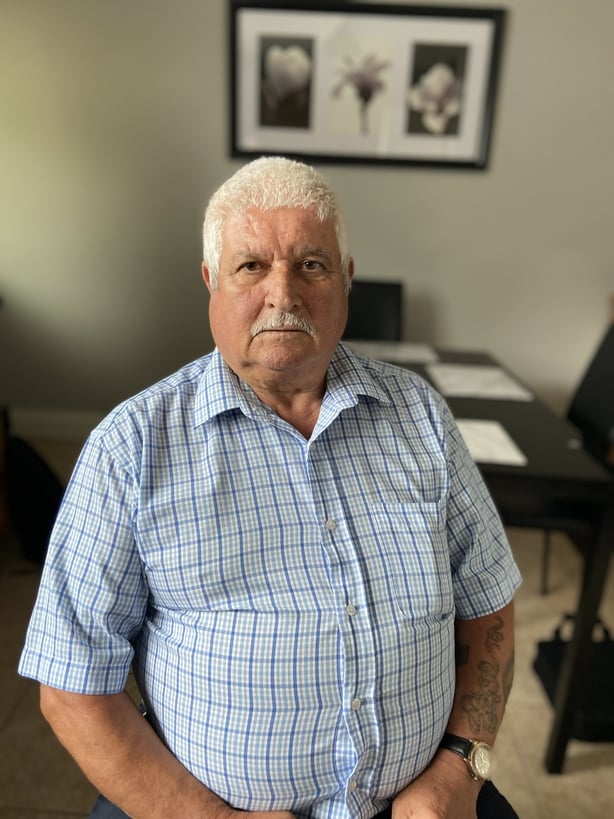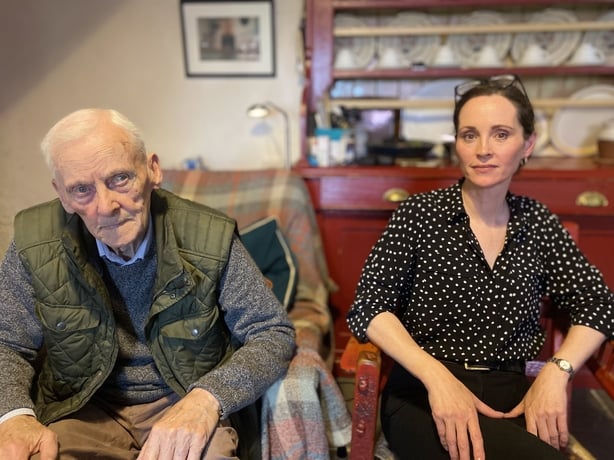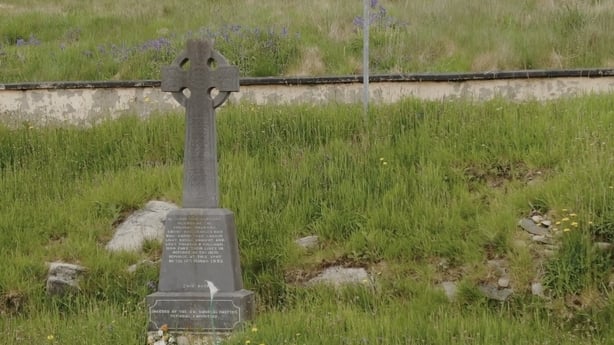In March 1923, four young men were executed in the makeshift prison at Drumboe Castle, Donegal. Tomás Mac Conmara tells the story of the Drumboe executions and the effect on the dead men's families
On Wednesday, 13th March 1923, Anti-Treaty republican prisoners were playing Gaelic football in the makeshift prison yard of Drumboe Castle, in Stranorlar, County Donegal. From different parts of Ireland, they had been imprisoned there for almost five months, following their capture and imprisonment by Free State forces.

Having come north to fight against the British state and defend nationalists from attacks in the now partitioned six counties, their initial hopes of cooperation with the Free State military faded, when instead, both sides became engaged in a violent pretext to the Civil War. By March 1923, the worst excesses of that war had already taken place, including executions, assassinations and even in the week previous, astonishing atrocities in Kerry.
With time for exercise over, the prisoners moved begrudgingly towards their appointed cells. Charlie Dálaigh (sometimes referred to as Daly) from Knockaunacoolteen in north Kerry, Tim O’Sullivan and Daniel Enright, both from Listowel and Seán Larkin from Bellagherty in South Derry, were called to one side and told that the following morning, at 7.00am, they would be executed.

Within twenty-four hours they would be, as one fellow prisoner described, ‘hurled into eternity by a volley from a firing squad’. Before any disclosure of devastation to the families and before the country was told of their fate, their fellow prisoners knew. It was within their memory the story first found a deep foothold. For those within the walls of Drumboe, the moments before their comrade’s execution were loaded with penetrating emotion, described by one who was there as ‘terrible in its intensity’. In 1979, Séamas Ó Rabhartaigh, who had been a prisoner at Drumboe, recalled meeting twenty-six-year-old, Charlie Dálaigh in the last moments of his life:
‘So, Daly came into our cell accompanied by two soldiers. He shook all our hands, and he was laughing as he usually always did. Another man in the cell asked him was he going home or what was happening. "Oh Yes" he said. "I am going home in the morning. The long home this time". He didn't seem bothered at all or at least that's the impression he gave.’
Ó Rabhartaigh heard the shots that ended the lives of Dálaigh, Larkin, O’Sullivan, and Enright:
‘We heard the soldiers in and out to them during the night. They (soldiers) took them around 5.00 … we heard the first hit … A good while later, I got the chance to look out the window … the soldiers were going up with four coffins with them… I stepped away from the window.’

The Drumboe Martyrs
As Ó Rabhartaigh moved away from the window, his four young comrades had already become the ‘Drumboe Martyrs’. The pathos of the original moment led to an eventual diffusion of memory across a landscape divided and the bequeathing of a legacy, carrying within it, deep commitments to remember, at both public and private levels. The Civil War Memory Project, as a classic example of oral history collection, aimed to find the fragments of that memory and history connected to the Drumboe Martyrs, and assemble from those remains a deeper understanding of the incident and its legacy.
Four months after their execution, Margaret Larkin, the mother of Seán Larkin, sent a copy of her son’s final letter to the Derry Journal and asked them to print it. Undoubted bravery and a calm resignation are in clear evidence, as is a firm conviction in the cause that carried him to that moment. Within the letter, Seán was also consciously contributing to his own remembrance:
I am sending my things home. There are two pipes, one for Father James and the other for Tom … There is a small silver brooch which I attempted to make and tried to scratch Cissie’s [Seán’s sister Máire] initials on it … There is a photo in my pocket-book for yourself … I have religious articles, but I intend wearing them when being executed.
Hours before his death, Seán wrote feelingly to his mother, who in April 1921 had lost her husband, after he died following the effects of a period in Belfast jail earlier that year:
‘I hope you won’t worry too much over this … I know it will be a great blow to you still … You have been model mother to me, and to all of us, and I know you would share your last breath with any of your children, and ever since father’s death, it has been my one desire to make you happy.’
Sean Larkin's nephew on the family stories surrounding his uncle's death
Unimaginable intensity
The brevity with which the men were executed meant that letters, penned with unimaginable intensity, were only opened weeks after the men were buried in Drumboe, adding a deeply traumatic impact to an already bereaved people. The later circulation of these letters was both a propaganda tool for the republican movement, and for the families, an exposure to the world of the gentle and human sentiments of their sons and brothers.
Back in March 1923, news of their execution had come to the families with crushing stealth and with no final words to soften the blow. In Listowel, ten-year-old Michael O’Sullivan was in his mother’s small restaurant when news arrived that changed his family forever. Michael’s son Dónal O’Sullivan spoke in 2022 about that moment:
‘I spoke to a man whose father-in-law was a commercial traveller from Limerick having a meal in my grandmother’s restaurant when word came that they were been executed and he said ‘twas very upsetting and emotional for everyone and he said it was the most upsetting day of his life … and he was a stranger! He saw the children and the neighbours so upset.’
Tilly Larkin was only one year older than Michael O’Sullivan, at the time of her brother’s death. In an interview undertaken only a short distance from the original home of Seán Larkin, her son, Dermot McKee told me how news came to Bellagherty:
‘My father told me that when on 14th March when the news came through to the Larkin family, he heard the terrible cries across the fields and he said he went out to the back of his own farmyard and he looked across and there he saw the line of the Larkin girls, all crying their eyes out and wailing and I suppose letting the world know that their brother had been executed in far Donegal. My mother would have been part of that group.’
At the same time, May Dálaigh, who like Michael and Tilly, had not entered her teenage years when news reached her home in Knockaunacoolteen about her brother Charlie. In 1978, May recalled, to Uinseann Mac Eoin, her experience in the weeks after Drumboe, as her family were subjected to violent raids by Free State forces. On one occasion within a vortex of gun shots and enraged voices, she knelt down and prayed intensely into her pressed palms:
‘They [Free State forces] were in the yard, they were in the front, they were firing shots all night … Charlie was dead now when that happened. My mother said that she actually heard me inside praying to Charlie to save the lads [IRA].’
A deep commitment
At the same home in 2022, a place that had been a repository for republican sentiment since the Fenian days of the 1860s, there remained a deep commitment to that tradition. Sadhbh Meade and her father Tony, both testified to the presence of Charlie Dálaigh’s memory as a symbol of that commitment in the decades after his death.

Janie Enright, the sister of Daniel Enright, would spend time often with May O’Sullivan, whose brother was Tim, having found a union in their shared loss at Drumboe. Daniel’s brother Jack, a former WWI solider, learned of his brother’s death while reading the newspaper in Mountjoy prison, where he was interned. Such are the often-concealed moments of pain, that silently reverberate across the legacy of an event like Drumboe.
On occasion, moments of such disclosure are only revealed in the wake of death. On 19th March 1935, Tim Sullivan’s mother Nora died in Listowel, twelve years after her son’s execution. News of her death led to a resolution of sympathy at a meeting of the Dan Enright Cumann in Creeslough, Donegal. It was a surprise to the family, when they were informed that Nora had secretly purchased a plot next to Tim’s grave at Listowel Cemetery, to ensure she would rest forever next to the son who was taken from her in Drumboe.
Public displays
Those private experiences were paralleled by public displays of remembering, as increasingly the memory was shared between the families and broader community. In October 1924, Donegal republican, Seán Mac Cumhaill, for whom his native county GAA grounds in Ballybofey was later named, was in Athlone when the men’s bodies were finally released by the Free State. He carried away their remains and also a commitment to their memory..

As the years moved further away from 1923, he and others organised annual commemorations, mostly under the umbrella of Sinn Féin. On occasion Fianna Fáil led parallel ceremonies and later, Republican Sinn Féin added a third front of remembering. Other public forms of memory came into being. Housing terraces in Donegal were named for Charlie Daly and Daniel Enright. Songs were composed in which the men's names were enshrined and in 1955, at the site of their death, a large freestanding limestone Celtic Cross was installed, with incised lettering telling the story of what happened there
All of the above actions contribute to a landscape of memory reaching across time and place. The recording of that memory, particularly from within the fragile vault of a family’s tradition, enables a respectful transition of private memory to the public arena. Such oral history infuses the public narrative on the Civil War, with a more in-depth human revelation and experience. With that, we move from simply accumulating knowledge to cultivating a profound and vital understating.
The Silent Civil War airs on RTE 1 on 26th April and May 3rd at 9.35pm and is available on the RTE Player after the live broadcast. This production is supported through the Decade of Centenaries Programme 2012-2023 by the Department of Tourism, Culture, Arts, Gaeltacht, Sport and Media.
If you'd like to contribute to the Civil War Memory Project collection, you can do so by contacting: bealoideas@ucd.ie












































